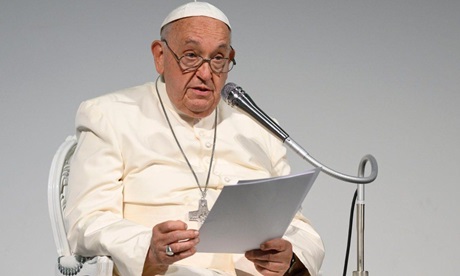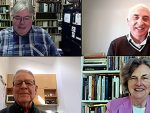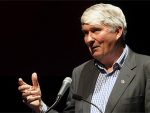July and August used to be downtime at the Vatican. That changed in 2013 after Cardinal Jorge Bergoglio of Buenos Aires was elected Bishop of Rome.
The Argentine Jesuit, now best known as Pope Francis, immediately broke the custom set by his predecessors and did not take a summer holiday.
That meant that no one else in the Roman Curia was allowed to slacken the pace, either.
The big papal mass on June 29, Rome’s patronal feast of Saints Peter and Paul, used to be the final act of the Vatican’s “pastoral/legislative year.”
Then the popes (at least John Paul II and Benedict XVI) would usually go to the Italian Alps for a couple of weeks.
Afterwards, they transferred to the Castel Gandolfo papal summer residence in the hills southeast of the Eternal City until late August or early September before going back to work full time.
Francis, on the other hand, has never taken a vacation. Instead, he’s traveled and has continued to work.
This year will be no different.
Upcoming plans
Although there are no big papal liturgies officially on the schedule for July and August, the 87-year-old Jesuit Pope will hold an ordinary public consistory on July 1 with the Church’s cardinals residing in Rome in order to vote on several candidates he has approved to be declared saints.
This is usually a pro forma meeting without any great publicity or fanfare. However, the Pope’s aides announced this one well in advance.
It might be a good idea to keep an eye on it, since it was during such a ceremony on February 11, 2013, that Benedict XVI surprised the world and renounced the papacy.
Don’t expect Francis to do that (at least not yet), but he could use this consistory to announce some other major decision for the life of the Church.
In any case, the next several months at the Vatican (or on the road) will likely bring some surprises.
This period will feature an uptick of activity for the elderly Pope, including the longest foreign journey of his pontificate (a September 2-13 visit to Indonesia, Papua New Guinea, East Timor and Singapore).
A critical month-long synod session follows, along with the opening of Holy Year 2025 and—many observers believe—yet one more consistory to create new cardinals.
The end of an era
The Pope Francis era is in its final stage.
Given his penchant for keeping people on their toes, shaking things up and issuing (with greater regularity) conflicting and even contradictory messages, it would not be wise to wager on when this pontificate will finally be concluded.
But Vatican watchers are already trying to draw up a balance sheet of Francis’ tenure as Supreme Pontiff.
He certainly has brought to the fore a lot of thorny issues—the role of women in the Church and Catholic teaching on human sexuality, to name just two.
Open discussion about these and a number of other items, such as obligatory priestly celibacy, were off-limits in the previous two pontificates.
The fact that they are debated openly, even inside the Vatican, is extremely healthy. And very disruptive.
The question many reform-minded Catholics are asking is whether Francis has been able to really change anything regarding such topics. And they rightly wonder if this season of openness will be closed down with the next Pope.
These are serious and worrying questions.
What’s changed?
Francis has not actually changed any key Church structures.
His long, piece-by-piece “restructuring” of the Roman Curia was not a restructuring at all.
He merely opened up some of the top jobs to lay people (including women), while leaving the organisational layout almost exactly as it has been since the late 16th century when Sixtus V devised it.
The Jesuit Pope, right from the very beginning, said he believes the most important reform concerns mentality or attitude, not structures.
Eleven years on, has he succeeded in changing the mentality in the Church?
It depends on who one is talking about.
It could be argued that he made a very serious tactical mistake from the very outset of his pontificate by alienating the Church’s primary workforce—the ordained sacramental ministers.
This includes those clerics who work in the Vatican.
It’s hard to be good in a bad system, but there are still some very fine presbyters and bishops in the Roman Curia (and lay people in its communications sector, by the way) who were initially energised by Francis’ election.
But the Pope, because of his questionable “bedside manner” of publicly criticising and even humiliating people who work for him, has demoralised and angered those who might have otherwise pushed and promoted his agenda for reform and renewal.
The Pope’s constant swipes at the Church’s more conservative (younger) priests and his snide remarks about “airport bishops” might play well to anti-clericalists (count me among them!) but they do not garner support from the men whom he (and we) most need to sustain our sacramental life.
That is just a fact.
Many of us believe that one of the most serious problems facing the Church and its future is the crop of younger priests and many of the bishops appointed in the last two pontificates.
Francis has done nothing to win them to his side. On the contrary, he has baited them.
This pontificate has been dynamic and has given much hope (perhaps, at times, false hope) to many everyday Catholics around the world, and even to others who are not full members of our Church or part of the broader Christian community.
Francis has been a breath of fresh air for us. But he also faces (and has even stoked) opposition, only some of which is public and openly demonstrative. How much silent opposition lurks beneath the surface?
This includes the hidden and growing discomfort many of the Church’s cardinals have with his sometimes erratic governing style.
In the end, it is they who will eventually elect his successor. It would probably not be wise to place a bet on the man they will choose.
- First published in Typepad
- Robert Mickens has been reporting on the Vatican and the papacy for nearly 35 years.
News category: Analysis and Comment.




